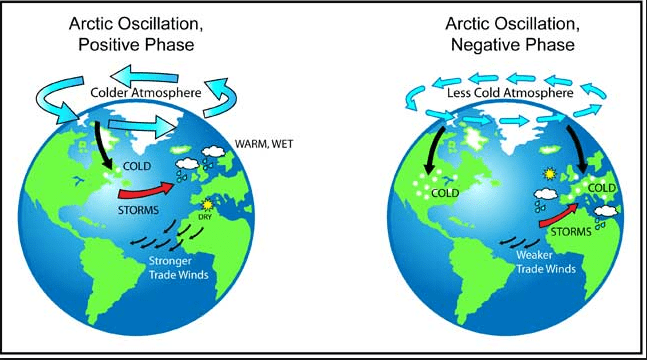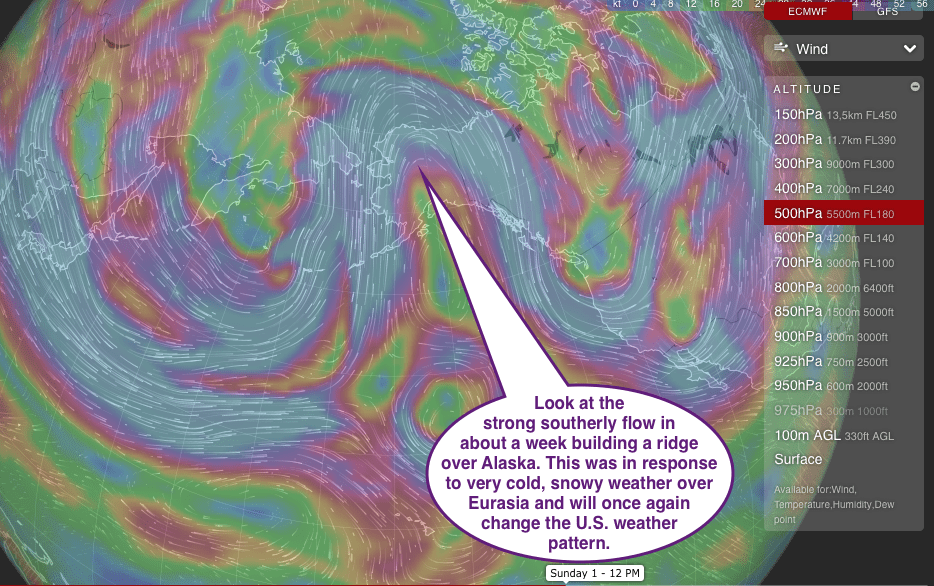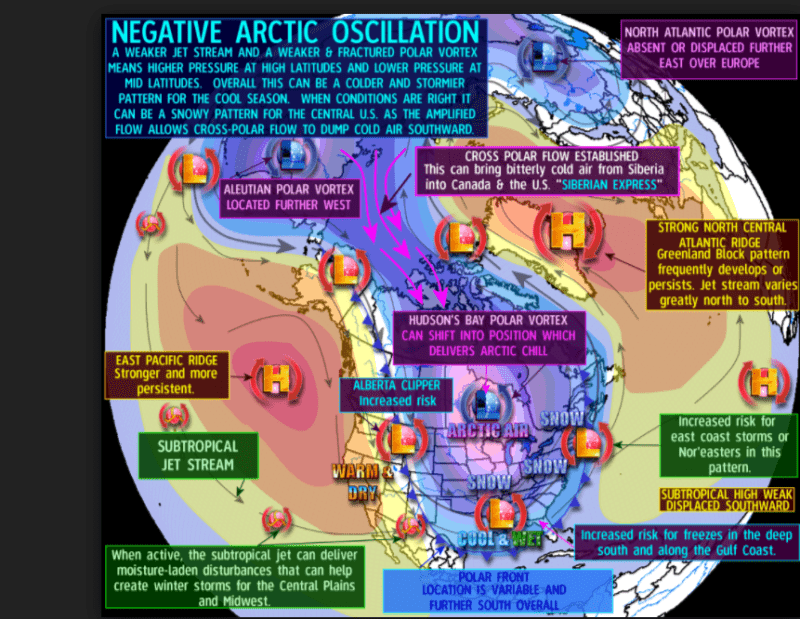Feet of snow will continue to bless ski resorts from Colorado to Utah and California well into January, with New England ski areas benefitting from a foot or more of snow by December 30th. While snows have been a consistent feature for many U.S. ski resorts, natural gas prices have whip-sawed with a volatile weather pattern since November.
“This has been a much more difficult winter forecast to predict with a whole host of different analog years to look at from the past. Most weak La Nina events do portend an overall cold January-March weather pattern, but several other variables suggest lots of volatility in the U.S. pattern.”
Late last week we started seeing unusual colds and snows in Eurasia starting to predict a building ridge over Alaska by early January. Called a negative EPO (Eastern Pacific Oscillation Index), this feature can sometimes also force the polar vortex south and influence the formation of a negative Arctic Oscillation Index (negative AO). If this occurs then a much more steady, consistent rally in natural gas will occur throughout the month.
Big warmth in the east over the next 10 days could still pressure heating oil but if the AO becomes negative could result in a much colder winter in European and Eastern U.S. heating oil areas a bit later on. Also, crude oil appears to be breaking out due to other non weather factors.
Unfortunately, because of strict client obligations, we cannot update wth respect to natural gas weather nor the market on a daily or consistent basis. But eventually, we plan to publish a monthly newsletter.
Weather enthusiasts can go to our front page of our site towards the bottom and play around with WINDYTV by scrolling in and out, rotating the globe to different sizes and using the European and GFS model forecasts to see snow and temperature trends anywhere in the world.
WINDYTV—GO TO OUR FRONT PAGE TOWARDS THE BOTTOM














